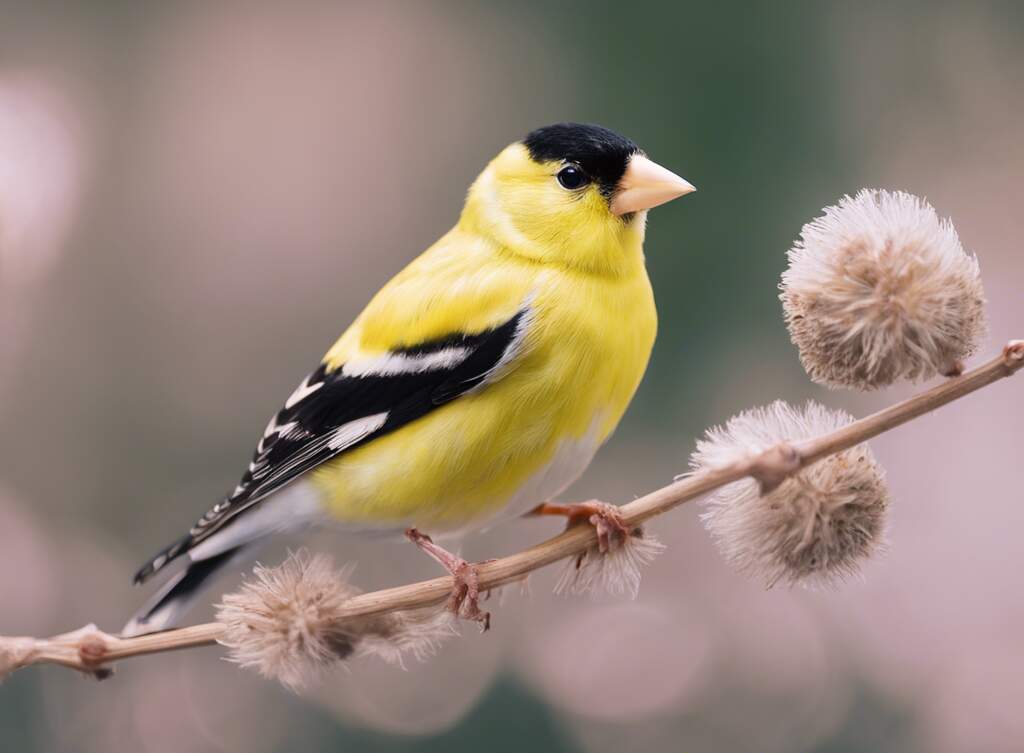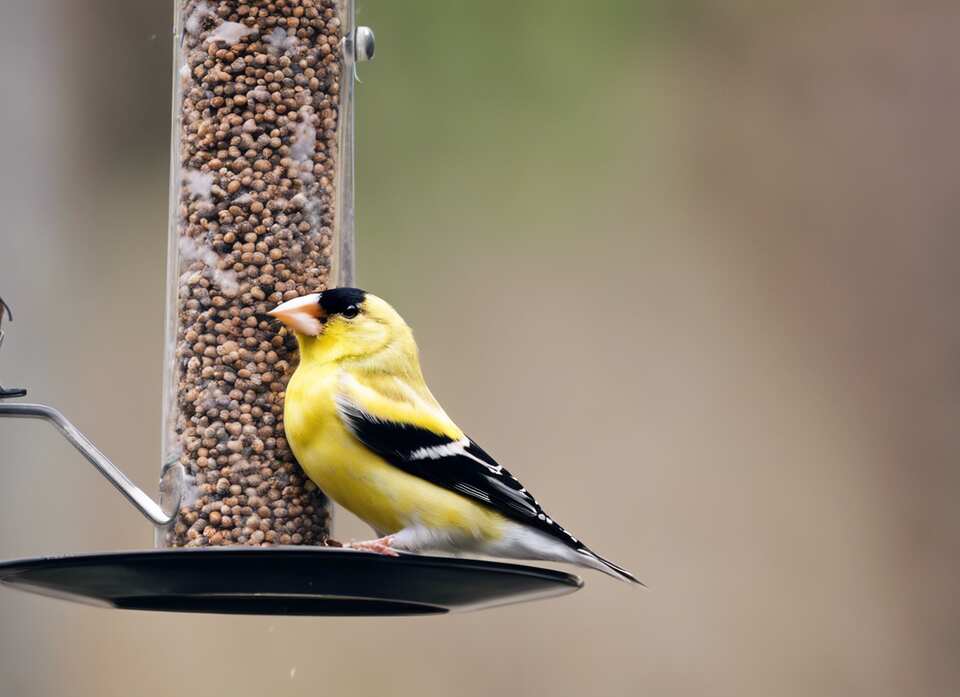Step into the fascinating world of Washington’s official state bird, the American Goldfinch! As we dive into its captivating tale, we’ll journey through the rich history and thoughtful process that led to its esteemed position. Discover why this vibrant and charming bird holds a special place in the hearts of Washingtonians and learn how it symbolizes the unique spirit of the Evergreen State.
Table of Contents
- 1 Washington’s State Bird Selection Process
- 2 The American Goldfinch: Washington’s Symbol
- 3 Characteristics of the American Goldfinch
- 3.1 Exploring the Captivating Characteristics of the American Goldfinch
- 3.1.1 Vibrant Plumage: A Kaleidoscope of Color
- 3.1.2 Melodious Vocals: A Captivating Serenade
- 3.1.3 Adaptable Behavior: Thriving in Diverse Habitats
- 3.1.4 Sociable Nature: Flocking for Safety and Companionship
- 3.1.5 Unique Feeding Habits: Specialized for Thistle and Seeds
- 3.1.6 Conservation Efforts: Protecting a Cherished Species
- 3.1 Exploring the Captivating Characteristics of the American Goldfinch
- 4 Conclusion
- 5 References:
- 6 Author
Washington’s State Bird Selection Process
The American Goldfinch became the official state bird of Washington in 1951 after a long and contentious process. In 1928, Washington’s school children were first asked to select a state bird, and they chose the Western Meadowlark. However, the state legislature was hesitant to officially designate the Meadowlark, as it was already the state bird of several other states.
In 1931, the Washington Federation of Women’s Clubs conducted another poll, this time selecting the American Goldfinch as their preferred state bird. This created an unofficial dual state bird situation, with both the Meadowlark and the Goldfinch being considered. For the next 20 years, the state legislature failed to take any action to officially designate a state bird.
Finally, in 1951, the legislature decided to let the school children choose again, and this time the American Goldfinch was unanimously selected. With the legislature’s official approval, the American Goldfinch, also known as the Willow Goldfinch, became the permanent state bird of Washington.
The bright yellow bird with its distinctive black cap and wings was chosen for its beauty and prevalence throughout the state. The long process of selecting the state bird involved citizens, school children, and legislators, demonstrating the care taken to choose an appropriate symbol for the state.
The American Goldfinch: Washington’s Symbol
The Vibrant Charm of the American Goldfinch
The American Goldfinch, with its striking yellow plumage and lively demeanor, holds a special place in the hearts of many bird enthusiasts in Washington State. As the official state bird, this charismatic species has become a symbol of the Pacific Northwest’s natural beauty and avian diversity.
Identification and Appearance
The American Goldfinch, scientifically known as Spinus tristis, is a small songbird that stands out with its bright yellow body and black cap, wings, and tail. During the winter months, the male’s plumage takes on a more subdued olive-brown hue, but the bold black-and-yellow pattern returns in the spring as the breeding season approaches. Females and immature birds display a more muted yellow-green coloration throughout the year.
Habitat and Behavior
These finches are found in a variety of habitats across Washington, from open fields and roadsides to backyard feeders and urban parks. They thrive in areas with an abundance of thistles, sunflowers, and other seed-bearing plants, which provide their primary food source. American Goldfinches are known for their undulating, bouncy flight patterns and their characteristic “per-chic-o-ree” call, which can be heard echoing through the air.
Nesting and Breeding
The breeding season for American Goldfinches typically begins in late spring, with the birds constructing delicate cup-shaped nests made of plant fibers, animal hair, and other soft materials. The females lay a clutch of 4-6 pale blue or white eggs, which they incubate for about 12-14 days. Once the chicks hatch, both parents work tirelessly to feed and care for their young, ensuring their survival and successful fledging.
Feeding and Diet
American Goldfinches are primarily seed-eaters, with a diet that consists of a wide variety of plant seeds, including those from thistles, sunflowers, and nyjer (also known as thistle) plants. During the breeding season, they may also supplement their diet with insects and other small invertebrates to provide additional protein for their growing chicks.
Conservation and Appreciation
Despite their vibrant appearance and widespread distribution, American Goldfinches face various threats, including habitat loss, pesticide use, and competition from invasive species. Conservation efforts by organizations and avid birdwatchers have helped to maintain healthy populations of these beloved state birds.
In Washington, the American Goldfinch is widely celebrated and admired. Birdwatchers and nature enthusiasts eagerly await the arrival of these cheerful birds each spring, eager to catch a glimpse of their bright plumage and lively antics.
The American Goldfinch has become a cherished part of the state’s natural heritage, serving as a reminder of the beauty and diversity of the Pacific Northwest’s avian community.
Characteristics of the American Goldfinch
Exploring the Captivating Characteristics of the American Goldfinch
The American Goldfinch, a vibrant and lively bird, has long captivated the hearts and minds of nature enthusiasts across the United States. As the official state bird of Washington, this diminutive species boasts a remarkable array of features that make it a true delight to observe and appreciate.
Vibrant Plumage: A Kaleidoscope of Color
One of the most striking characteristics of the American Goldfinch is its stunningly vibrant plumage. During the spring and summer months, the male birds don a brilliant yellow coat, complemented by bold black wings and a distinctive black cap. This dazzling display of color is a true feast for the eyes, making the American Goldfinch a standout in any garden or natural setting.
Melodious Vocals: A Captivating Serenade
The American Goldfinch is not only a visual delight but also a treat for the ears. These little birds are known for their melodious and often repetitive calls, which have been described as a delightful “per-chick-o-ree” or a cheerful “potato-chip” sound. Their songs are a true symphony of nature, adding a delightful soundtrack to the world around them.
Adaptable Behavior: Thriving in Diverse Habitats
The American Goldfinch is a remarkably adaptable bird, able to thrive in a wide range of habitats. From suburban backyards and city parks to lush forests and open fields, these versatile creatures can be found in various environments across Washington State and beyond. This adaptability is a testament to their resilience and allows them to flourish in diverse ecosystems.
Sociable Nature: Flocking for Safety and Companionship
One of the most endearing characteristics of the American Goldfinch is their sociable nature. These birds are often seen traveling and foraging in flocks, which not only provides them with a sense of safety but also allows them to engage in lively social interactions. Watching a flock of American Goldfinches flitting from plant to plant is a captivating sight, as they chatter and interact with one another.
Unique Feeding Habits: Specialized for Thistle and Seeds
The American Goldfinch has evolved a unique set of feeding habits that set it apart from many other bird species. These birds are particularly fond of thistle seeds, which they deftly extract from the plant’s spiny flower heads. Their specialized beak and tongue allow them to efficiently access these nutrient-rich seeds, making them a valuable contributor to the local ecosystem.
Conservation Efforts: Protecting a Cherished Species
As the official state bird of Washington, the American Goldfinch holds a special place in the hearts of the region’s residents. In response to this, various conservation efforts have been implemented to ensure the long-term survival of this beloved species. These efforts include the creation of bird-friendly habitats, the protection of nesting sites, and the promotion of education and awareness campaigns.
By exploring the captivating characteristics of the American Goldfinch, we can gain a deeper appreciation for this vibrant and fascinating bird. From its stunning plumage to its melodious vocals and adaptable behavior, the American Goldfinch truly embodies the beauty and wonder of the natural world. As we continue to celebrate and protect this cherished species, we can ensure that the delightful presence of the American Goldfinch will be enjoyed by generations to come.
Conclusion
Washington’s Radiant Avian Emblem
The American Goldfinch shines as a symbol of Washington’s natural beauty and vitality. Its vibrant plumage, cheerful song, and distinctive behaviors have enchanted generations of residents and visitors. As the official state bird, it embodies Washington’s rich avian heritage and the marvel of its diverse wildlife.
Captivating Traits of the American Goldfinch
The American Goldfinch is a joy to behold, boasting striking appearance and engaging demeanor. Year-round, these birds undergo a striking transformation, with males adorning brilliant yellow and black breeding plumage in spring and summer. Their melodic calls, likened to a sweet “per-chick-o-ree” or “potato-chip,” resonate through parks and gardens statewide.
Beyond their beauty, American Goldfinches are known for lively, acrobatic displays. They deftly extract seeds from thistles, showcasing remarkable agility and dexterity. Their unique nesting habits also intrigue, with nesting activities delayed until late summer, ensuring ample food for their young during warmer months.
Preserving the American Goldfinch’s Habitat
As Washington’s state bird, preserving the American Goldfinch’s habitat is paramount. Urban expansion threatens nesting and foraging grounds, necessitating proactive conservation efforts. Preserving parks, gardens, and native landscapes, and implementing bird-friendly landscaping policies are vital steps.
Safeguarding the Goldfinch’s habitat not only ensures its continued presence but also promotes overall ecosystem health and diversity. As a symbol of Washington’s natural wonders, the American Goldfinch inspires stewardship of the Evergreen State’s cherished landscapes.




